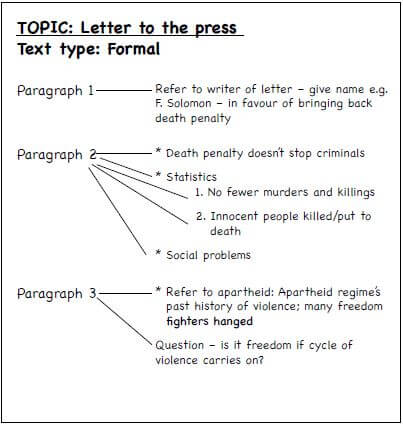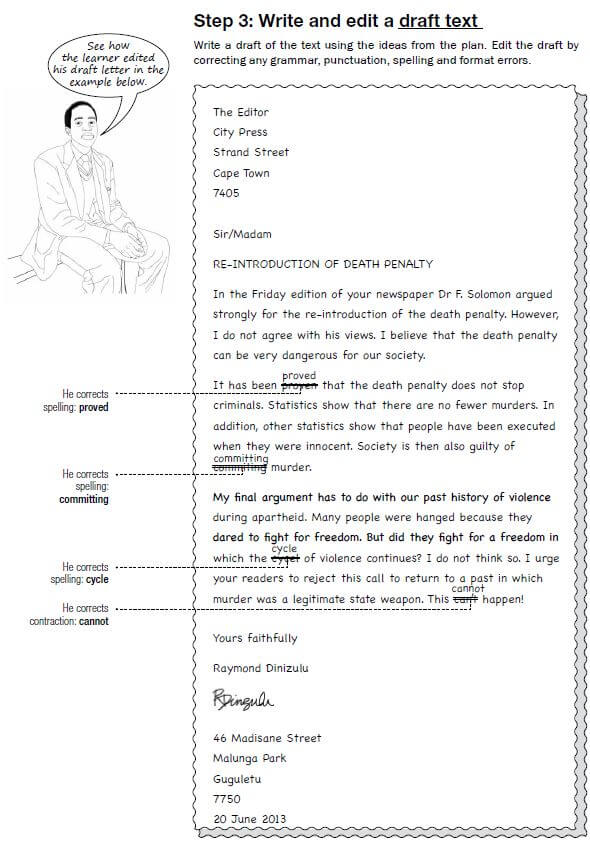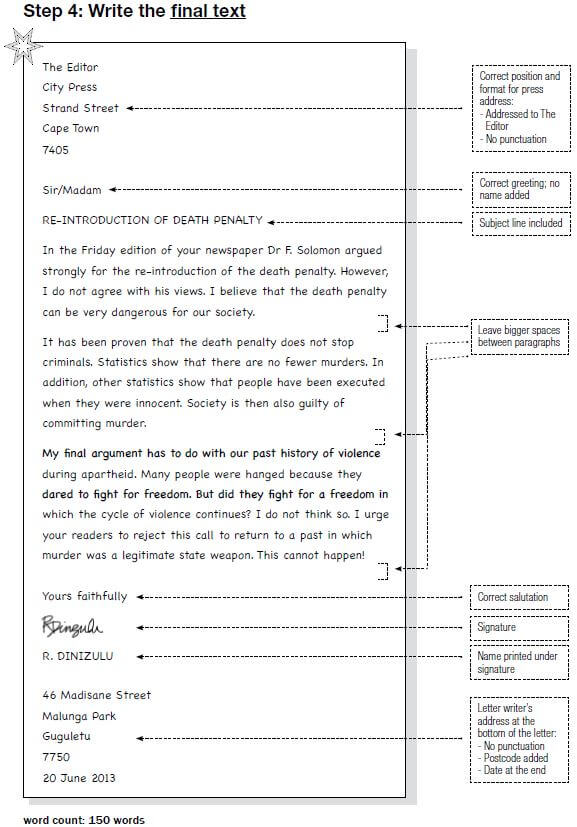Letter to the Press Format Grade 12
Share via Whatsapp Join our WhatsApp Group Join our Telegram GroupWriting a letter to the press
A letter to the press (such as newspapers) is a formal letter with its own features and format rules.
Hint:
|
eg: A learner’s example of a letter to the press using the four steps
Step 1: Choose the text type and topic
The learner chose to write this letter to the press in the exam:
Respond to a letter in your local newspaper. In this letter a reader argues that the death penalty should be re-introduced.
Take a position in which you either support or reject the reader’s views.
Step 2: Plan the text
Find the key words in the question to help you think of the contents of the letter. The key words in this question are death penalty and support or reject.
The learner has used a list to plan her letter.


Activity: Writing a letter to the press
Here are some letter to the press topics to help you to practise your writing skills:
- Write a letter to the press in which you support or disagree with raising the age at which a person can obtain a driver’s licence from 18 to 21.
- Write a letter to the press in which you take a stand on the issue of violence against women. Propose a way of dealing with people who abuse women.
2.4. Category A checklist
Features | Details of the feature | Yes | No | Don't know |
Exam instructions | I understand the exam instruction for writing a letter | |||
Letter topic | I understand the letter topic I have chosen. | |||
Letter type | I understand the features of the letter type I have chosen:
| |||
Content, planning and format | ||||
Planning | I can show evidence of planning my letter. | |||
Content | Each point in my plan is relevant to the letter topic. | |||
Purpose/audience | I understand the purpose of the letter type I have chosen | |||
Letter structure | The first paragraph of my letter introduces the topic. The paragraphs in the body of my letter relate to the topic. The last paragraph concludes the ideas in my letter. | |||
Sentences | I have not repeated sentences in my paragraphs. | |||
Paragraphs | My ideas link and are well-organised in paragraphs. | |||
Format | I have used the correct format for the type of letter I have chosen:
| |||
Language, style and editing | ||||
Choice of words/diction | I have chosen my words carefully to make my letter interesting. My letter has the correct register (formal or informal) for the type of letter i have written. | |||
Verb tenses | I have used tenses correctly (past, present or future). | |||
Concord | My nouns and verbs are in agreement. | |||
Spelling | My spelling is correct. | |||
Punctuation | My sentences start with a capital letter and end with a punctuation mark. | |||